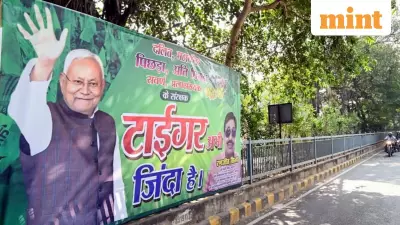
The 2025 Bihar assembly election produced a verdict that was both expected and surprising in equal measure. While the National Democratic Alliance retained power as anticipated, the path to victory revealed new political dynamics that will shape the state's future.
The Winning Formula: Experience Meets Youth
As predicted, the NDA coalition maintained its hold on Bihar, with Nitish Kumar expected to continue as Chief Minister. However, the alliance's success in crossing the 200-seat mark was significantly aided by younger leaders who brought fresh energy to the campaign.
This election demonstrated that in Bihar's complex social fabric, a combination of experienced leadership, consistent welfare delivery, and dynamic young faces proved more effective than relying solely on established popularity or purely youth-driven politics.
The Youth Paradox in Bihar Politics
Bihar's demographic profile suggested a potential breakthrough for younger candidates. The state has a predominantly young population, with nearly 57-58% under 25 years and Generation Z accounting for approximately 25% of registered voters.
Despite these numbers and a record 67.13% voter turnout - the highest since 1951 - the newly formed assembly actually grew older. Data from the Association for Democratic Reforms shows the average MLA age increased to 53 years.
This paradox highlights a crucial lesson: while youth aspirations create powerful narratives, they require organizational support, welfare credibility, and broad-based alliances to translate into electoral success.
Key Players in NDA's Success
Nitish Kumar's appeal rested on his track record of delivery and familiarity. His long tenure, marked by infrastructure development, electrification, women-centered schemes, and visible rural services, built voter trust - particularly among families concerned about daily survival and local governance.
This credibility was amplified by BJP's organizational strength and national messaging, creating a coalition that combined administrative reputation with ground-level reach.
The victory wasn't solely due to senior leadership. Chirag Paswan described his role as "sabji mein namak" (salt in the vegetables) and delivered significantly. His Lok Janshakti Party (Ram Vilas) won 19 out of 29 seats it contested, directly pushing the NDA past the 200-seat threshold.
More impressively, the party captured 17 constituencies previously held by the opposition Mahagathbandhan, exceeding expectations about its limited reach.
Another young star emerged in Maithili Thakur, the 25-year-old folk singer who won the Alinagar seat for BJP. Her victory demonstrated how cultural influence and youth appeal, when rooted in local identity and persistent outreach, can convert into electoral gains. She defeated RJD's Binod Mishra and is set to become the state's youngest MLA.
Why Opposition's Youth Focus Fell Short
Rahul Gandhi and Tejashwi Yadav positioned themselves as voices of young India, emphasizing job creation, caste-based census, and economic justice. Rahul Gandhi's "Voter Adhikar Yatra" and direct appeals to Gen Z voters, however, failed to translate into substantial gains.
Political strategist Prashant Kishor criticized both sides for being outdated and disconnected from ground realities. He questioned Rahul Gandhi's engagement with Bihar, noting that local voters weren't responding to his messaging.
New political experiments, including Kishor's own Jan Suraaj, struggled to convert enthusiasm into electoral performance despite extensive door-to-door campaigning.
Women Voters: The Decisive Factor
A significant twist in this election came from women voters, who recorded a 71.6% turnout compared to 62.8% among men. This created a clear gender advantage for the NDA.
Women-centric welfare measures, particularly direct cash transfers and mobility-support initiatives, played a critical role. Nitish Kumar's focus on women's empowerment, including the Rs 10,000 direct assistance scheme, strengthened trust and reinforced a dependable female vote bank.
Lessons for Bihar's Political Future
Bihar's 2025 verdict shows that generational change in politics tends to be gradual rather than revolutionary. For the NDA, this win validates a coalition approach that pairs veteran governance with youthful energy.
For the opposition, the message is clear: charisma must be matched by credible welfare offerings and strong grassroots organization. Changing Bihar's political landscape requires patient groundwork - building cadres, stitching alliances, and nurturing constituency-specific strategies that can't be achieved in a single election cycle.
The election offered a lesson that's simple in concept but challenging to execute: in a socially complex state like Bihar, mixed leadership combining experience, welfare credibility, and new energy isn't just desirable - it's essential for electoral success.





